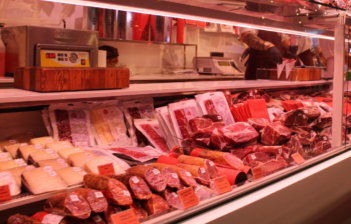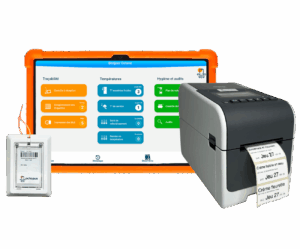Master your secondary expiration dates in butcher shops and delicatessens
Ensuring Food Safety in Your Butchery and Delicatessen through Proper Management of Meat Expiration Dates in Compliance with HACCP
Here are some guidelines to help you effectively manage the expiration dates of your meats and avoid food poisoning often linked to these products.
Use-By Dates (DLC) for Meat in Butchery and Delicatessen
In butcheries and delicatessens, as in all food service sectors, the use-by date (DLC) applies to perishable food products which, after a short period, may pose a health risk. The DLC is set by the professional after conducting aging tests. It must be indicated on all packaged products (cold cuts, fresh meat, refrigerated prepared meals, etc.).
The DLC is displayed on packaging with the phrase “To be consumed by…” followed by the day and month or a reference to where the date can be found on the label.
The product shelf life depends on several factors:
- Product composition
- Type of packaging, whether airtight or not
- Temperature profile applied to the product
- Storage temperature (including fluctuations during distribution)
To assist butchers and delicatessens, recommendations have been provided by the GBPH. However, professionals must validate shelf lives through bacteriological analyses or aging tests performed on their products.
Bacteriological Analyses
Bacteriological analyses assess the microbiological quality of products. Results must be compared with criteria defined by regulations (Regulation EC No 2073/2005). The DLC will depend on the microbiological outcome. If satisfactory, the use-by date is validated.
How to Properly Store Meat?
To guarantee the quality of your meat, the HACCP method specifies the importance of inspection upon receipt. You should check dates, temperature, and origin.
Then, you can monitor meat quality through several indicators:
Appearance:
- If packaged, the packaging must not be damaged, punctured, or swollen.
- The meat must not be slimy.
Odor: Regardless of meat type, it should not smell like ammonia, sour or rotten, which indicates spoilage.
It is best to keep the meat whole when possible, as deterioration accelerates with cutting.
Did you know? The Octopus HACCP app lets you perform your receipt checks in a few clicks from your smartphone and record all control points for your meat at delivery.
Indicative Temperatures and Shelf Lives
The table below shows the GBPH recommended shelf lives. In HACCP, it is crucial to respect these food safety rules.
| Type of Meat | Temperature | Storage Duration |
| Vacuum-packed meat and offal | <4°C | 15 to 21 days |
| Minced preparations seasoned with nitrite salt or saltpeter | <7°C (with night storage at <4°C) | 3 to 4 days |
| Minced preparations seasoned with white salt (minimum 15 g/kg) | <4°C | 1 to 1.5 days |
| Minced preparations seasoned with dairy, eggs, cream, or egg products | <4°C | Half a day |
| Hot-held roasted poultry | Exposed at >63°C | 1 to 2 hours at room temperature sale |
Freezing Temperatures:
| Type of Meat | Temperature | Storage Duration |
| Meat and offal | -18°C | 6 months |
| Uncooked chicken parts (thighs, fillets) | -18°C | 6 months |
| Pork, lamb, or veal | -18°C | 6 to 8 months |
| Beef, game, and poultry | -18°C | 8 months |
These data are indicative and must be validated by microbiological analyses for all fresh products.
To label your meats, the Octopus HACCP application offers a labeling module that lets you print durable use-by date labels resistant to moisture and freezing. Want to learn more? Discover our tailored HACCP solutions for butcheries and delicatessens.
This article was written in partnership with the CFBCT.



